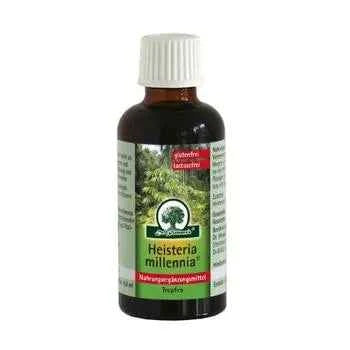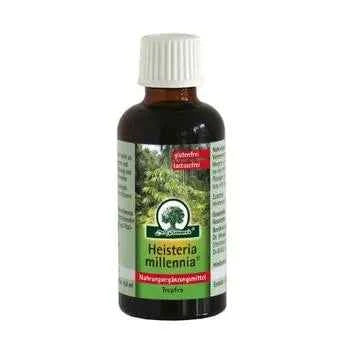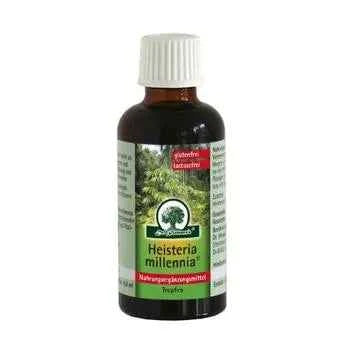Beethoven-Pharma Dr.W.Wiemann GmbH
Heisteria millennia tincture
Heisteria millennia tincture
Couldn't load pickup availability
WIEMANN'S Heisteria millennia tincture
Heisteria bark has long been used by indigenous peoples, especially for inflammatory conditions such as rheumatism. The bark can be used as an anti-inflammatory, analgesic, muscle relaxant, and to strengthen the immune system.
Recommended intake: 1 daily dose of 2 x 40 drops corresponds to approximately 4.0 ml and approximately 25 daily doses of 100 ml. Do not exceed the recommended intake. Maximum daily intake: 4 ml/day corresponds to 320 mg of Heisteria bark/day. Active ingredient: Heisteria bark 8 g/100 ml corresponds to 80 mg/ml. Contains 40% alcohol by volume.
Drops: gluten-free, lactose-free
Ingredients: Heisteria bark, water, alcohol
Contraindications and interactions: none known
Heisteria bark benefits:
Heisteria bark, often known as Houhere or Lacebark, has traditional medicinal uses including a soothing, mucilaginous effect for digestive and skin issues, and its bark has been used to make ropes and for weaving. Its benefits stem from its mucilage content, which can soothe inflamed mucous membranes and hydrate the skin. Some research also suggests potential antiviral and antioxidant properties, but more studies are needed.
Traditional medicinal uses
Digestive health: Traditionally used to soothe stomach troubles, it may help with inflammatory conditions of the digestive system like gastritis, ulcers, and colitis, and is considered a New Zealand equivalent to Slippery Elm.
Skin and wound care: Can be applied externally to soothe and heal tissues, and as a softening agent for sun-damaged skin. It has also been used to bathe burns or applied to circumcision wounds in some cultures.
Respiratory issues: Infusions can be used for respiratory problems.
Cough relief: In parts of West Africa, the bark is used as a cough medicine.
Other uses
Weaving and rope making: The inner bark can be used for fine weaving of products like baskets, and the bark can be twisted to make ropes.
Scientific evidence
Antiviral activity: Some extracts have shown antiviral activity against herpes simplex viruses (HSV-1 and HSV-2).
Antioxidant properties: The bark contains compounds with antioxidant properties that may help reduce inflammation, although human studies are limited.
GABA receptor ligands: Some research suggests that certain extracts may act on GABA receptors, which could be relevant to their traditional use for certain ailments.
Heisteria millennia tincture
Share




